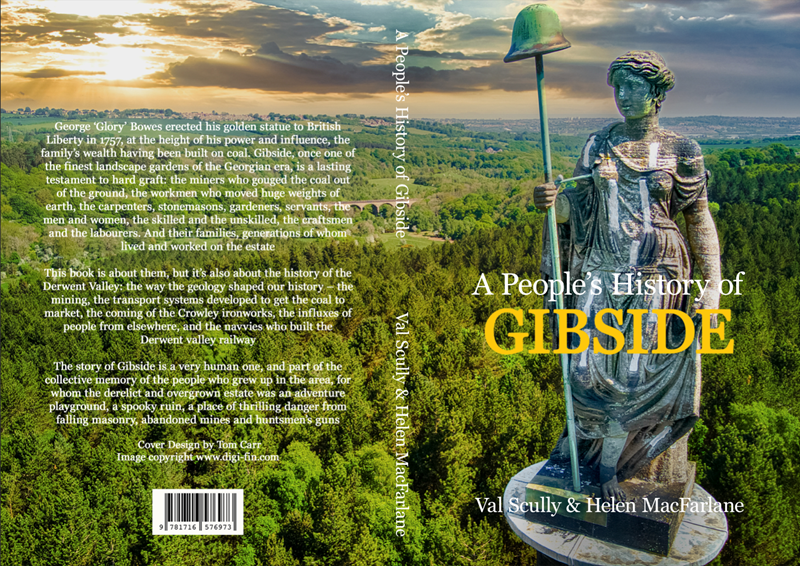A People's History of Gibside

George ‘Glory’ Bowes erected his golden statue to British Liberty in 1757, at the height of his power and influence, the family’s wealth having been built on coal. He collected fine art, bred the finest racehorses and brought world-famous musicians, architects and landscape designers to his estate. Gibside, once one of the finest landscape gardens of the Georgian era, is a lasting testament to hard graft: the miners who gouged the coal out of the ground, the workmen who moved huge weights of earth, the carpenters, stonemasons, gardeners, servants, the men and women, the skilled and the unskilled, the craftsmen and the labourers. And their families, generations of whom lived and worked on the estate.
This book is about them, but it’s also about the history of the Derwent Valley and all the settlements around the edges of Gibside. It’s about the way the geology shaped our history – the mining, the transport systems developed to get the coal to market, the coming of the Crowley ironworks, the influxes people from elsewhere, the navvies who built the Derwent valley railway.
The story of Gibside is a very human one, and part of the collective memory of the people who grew up in the area, for whom the derelict and overgrown estate was an adventure playground, a spooky ruin, a place of thrilling danger from falling masonry, abandoned mines and huntsmen’s guns.
And its history is fragmented, the evidence scattered to the four winds because of the nature of the human story that governed its fate. This book began as an investigation into the gap in the records: what happened between the death of the last Bowes owner in 1885, and the coming of the National Trust almost a hundred years later?
Intriguing fragments of evidence survived – an image of the Land Army outside the Hall, a programme for an historic pageant, a Victorian family photograph outside Chapel Cottage, a postcard of Lang Jack’s cottage with Gibside in the background, childhood memories of the Queen Mother’s visits, a mysterious reference to ‘Gibside Camp’ in the First World War, someone’s grandad who rowed across the river to rescue some papers from a fire in the hall…
When the Renwick family lived in the Stables from the 1930s to the 1970s, there was a locked room where estate records were stacked ceiling-high. What was in them? What can we learn from the documents that survived?
This account of the story of the people’s Gibside began as a lockdown project. Archives have been closed: information has come from books, online sources, artefacts, photographs and oral evidence from people, some of whom came forward, while others had to be tracked down. In the book, there is a long list of the people who have contributed in ways great and small, notably James McQueen Huxley and Joan Renwick, who have kindly given permission for the use of their photos, some of which appear below.
There will be more out there… if you have anything you think might be of interest, or you'd like to see the Gibside Family Tree on Ancestry, please get in touch.
Read about the book in a feature by Tony Henderson on Cultured North East























